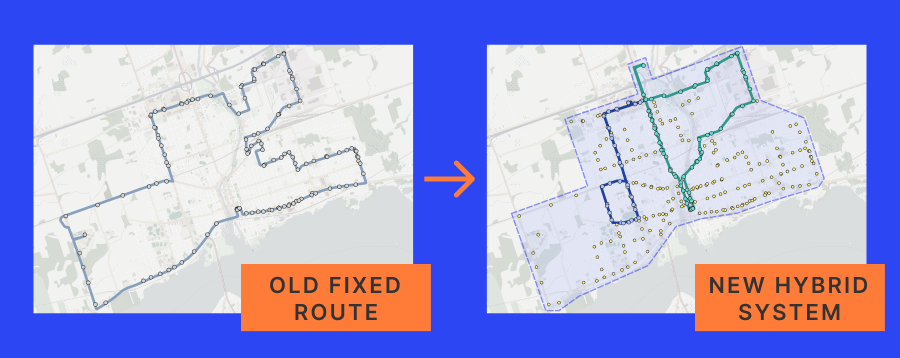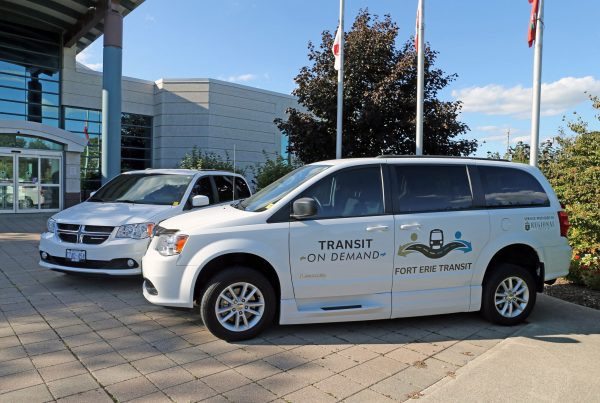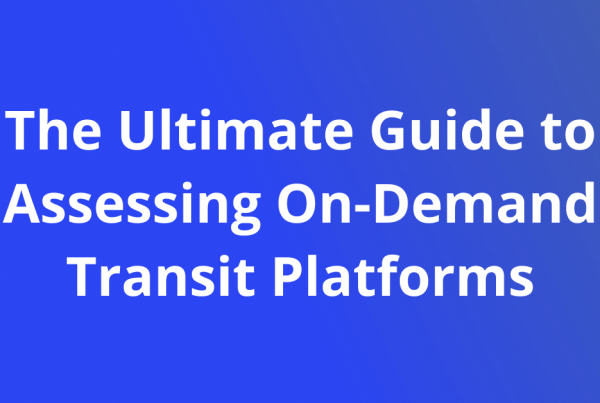How Better Origin-Destination Data Creates Better Fixed Routes
By Gurjap Birring
In most cities, fixed route buses are a fixture in public transit systems. Transit planners design these routes after weighing the need for community accessibility, popular destinations, and scheduling. Now and again, transit systems are redesigned, partially or entirely, to better address the needs of riders but can often fall short.
Newly created fixed routes sometimes effectively serve the needs of riders but sometimes don’t. The key to well-designed fixed routes is accurately understanding how riders are using transit to travel. To learn this, planners need strong rider data but usually, they only have fragmented data from past fixed routes to rely on. If informative data won’t come from fixed routes, how else can a transit agency get it? On-demand service.
It is counterintuitive, but if a transit agency wants to improve its fixed routes, deploying on-demand service can be very helpful. In our experience, to generate accurate and insightful rider origin-destination data there is nothing better than our on-demand service.
Data From On-Demand Service is More Informative
One of the unique aspects of our global optimization algorithm is that it routes all vehicles over a single zone. This allows transit agencies to provide transfer-free service where riders can travel directly where they want to go at any given time.
As riders use the on-demand service, the system collects trip data which displays exact origins and destinations. This data is incredibly useful because it helps transit agencies better understand how riders want to travel around the city. In comparison, the data transit agencies typically use to design fixed routes isn’t nearly as useful.
Not having quality rider travel data is a common issue for transit agencies. Usually, the data they have comes from rider counters on fixed routes. This data has limited usefulness because it only accounts for when riders get on the bus, not where and when they get off the bus. As well, the counters don’t distinguish if a rider is transferring from one bus to another, which leads to inflated ridership numbers. Overall, this kind of data gives transit agencies limited insights.
Another issue with counter data is that it comes with no context. For example, a particular fixed route may seem to be popular according to its ridership but the transit agency can’t actually determine why that is. It could be that there is a popular destination on that route, like the local Walmart, which attracts riders to the route, but the route itself is otherwise infrequently used.
That is the kind of understanding this type of data can’t give you, hence, the fixed route designs derived from such data are usually suboptimal and don’t best serve how riders want to travel.
Cities Design Better Transit Systems
In contrast, the data generated by Pantonium’s on-demand service definitively illustrates city-wide travel patterns, pinpoints where and when the service is popular, and makes it easy for transit agencies to design effective fixed routes.
A city that recently used its origin-destination data to design new fixed routes is Sioux Falls, South Dakota. A city of about 200,000 people, the city converted its entire fixed route system to on-demand service and collected significant rider origin-destination data over a few months.
Pantonium then helped them design fixed routes to serve areas where demand was highest, while keeping the rest of the city covered with on-demand service. Our vision for transit is this kind of hybrid system that delivers the most efficient, convenient, and accessible transit possible.
To build these optimized transit systems, access to informative data is essential. By incorporating on-demand service and using the data it generates, transit agencies can ensure they’re able to adapt and ensure their transit systems address the changing needs of riders.





